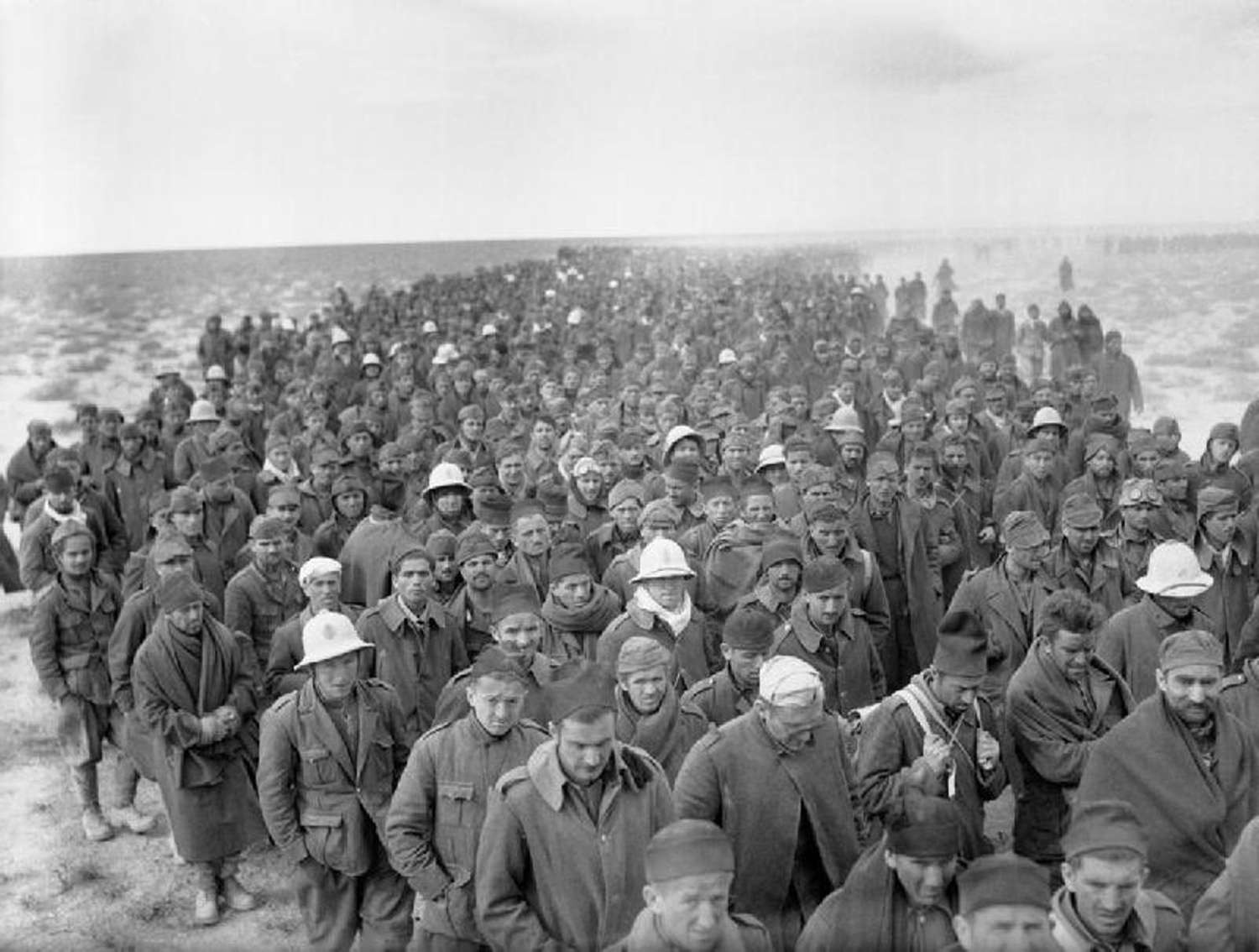
Operation Compasswas the British response to the attack on Egypt that Benito Mussolini of Italy launched in September 1940. The Italian withdrawal became a disaster for nearly all of the 10th Italian Army, a smaller force.
On 13 September 1940, the Italian Marshal Rodolfo Graziani commanded the Italian Tenth Army of almost 250,000 men to attack from Libya (Cyrenaica) against Egypt, which then was a British colony. Numerically, the Italian superiority was overwhelming, as the forces defending Egypt did not exceed 36,000 men. Indeed, the initial Italian offensive drove back the British some 100 km inside into Egypt.
But Graziani ordered to halt and strengthen in Sidi Barrani, as the number of Italian tanks were much lower than that of the British and the open desert was the perfect battlefield for them. Graziani decided to await the arrival of supplies and created several defensive camps along the defensive line of Sidi Barrani.
On 9 December, the 4th Division of India and the British 7th Armoured Division, commanded by British commander in chief Archibald Wavell and General Operations Richard O’Connor, launched an attack between two Italian camps, which were too far apart to support each other. In this way, the attack took place behind the camps; they were not prepared, and the result was a completely disorganized Italian withdrawal. In Sollum and Sidi Barrani, the British captured some 40,000 soldiers.
On 5 January 1941, the 6th Australian Division went to relieve the 4th Division of India, which had been sent to participate in the East African Campaign.
This was when General O’Connor could continue chasing the Italians. On 8 January, the vital port of Tobruk fell to the Australians, and 25,000 Italian soldiers were captured. Similarly, Halfaya Pass and Fort Capuzzowere captured.
Afraid to face the British battleships in the desert, the Italians withdrew from the coast road, and the Via Balbia was made, advancing along the narrow coastal strip to the Mediterranean Sea in the north and the Green Mountains in the south. O’Connor realized that he could send the 7th Armored Division to Benghazi to catch the Italian Tenth Army. In a risky maneuver, Australians pursued the Italians along the coast while the British tanks rushed to close the circle in the desert that stretches south of the mountains.
The Italian army was able to pass in Benghazi but had not yet managed to avoid being caught. On 7 February, the 7th Armored Division, henceforth known as the “Desert Rats,” completed the fence in Beda Fomm, and a disaster was pounced on the hapless Italian army.
In all, the Italians were caught with 130,000 soldiers, and the destruction of 400 tanks and 1,292 pieces of artillery besides, general Pietro Maletti died in the early days of the British offensive. For its part, the British managed to move 800 km in 10 weeks, and 500 men died, while 1,225 were injured.
General O’Connor came to the Agheila but had to stop their advance according to the orders from British Prime Minister Winston Churchill, as the Balkan campaign had just started and needed to send troops to Greece.
Immediately, Hitler would order the execution of Operation Sonnenblume, and the course of the war in Africa would overturn pro - Axis with the arrival of the Afrika Korpsand its general Erwin Rommel.